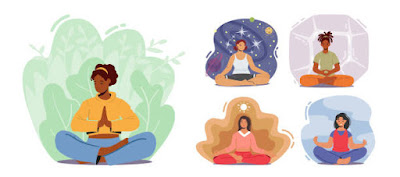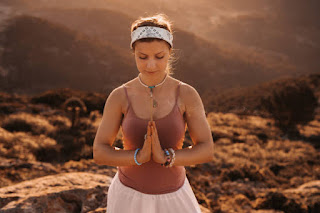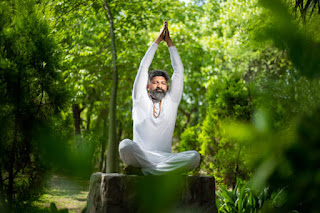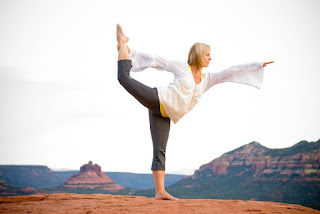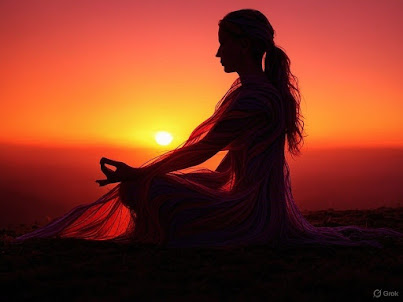Energetic Alignments in Kundalini Yoga
Energetic Alignments in Kundalini Yoga
“Kundalini Yoga is the uncoiling of the being. It is the potential of the human being. It is the infinite in the finite, and it is the grace when grace becomes a constant part of your life.” — Yogi Bhajan
Kundalini Yoga has often been described in many different ways, reflecting the depth and uniqueness of this spiritual practice. Some define it as the “yoga of awareness,” emphasizing the awakening of the soul’s highest potential and the expansion of consciousness. Others refer to it as a practice designed to activate and elevate the kundalini energy—a powerful, dormant energy said to reside at the base of the spine. At its core, Kundalini Yoga aims to unlock this energy and channel it through the body’s energy centers, or chakras, creating a sense of balance and vitality..
In this article, you will explore the essential concepts and techniques of Kundalini Yoga, from understanding the chakras and energy flow to learning how breathwork, kriyas, and meditation can be used to cultivate powerful energetic shifts. Whether you’re seeking emotional healing, spiritual growth, or a greater sense of vitality, Kundalini Yoga offers a transformative path to aligning mind, body, and spirit.
What is Kundalini Yoga?
Kundalini Yoga is often referred to as the “yoga of awareness,” a practice designed to awaken and elevate kundalini energy, which lies coiled at the base of the spine. This energy is believed to be a powerful life force that, when activated, travels upward through the body’s central energy channel, the Sushumna Nadi, to the crown chakra, leading to heightened consciousness and spiritual awakening.
Defining Kundalini Yoga
Kundalini Yoga is distinct from other forms of yoga in its integration of breathwork (pranayama), physical postures (asanas), chanting (mantras), and meditation. Each class is a journey that weaves these elements together in a precise way to cleanse the body, balance the mind, and activate the spirit. This makes it not only a physical practice but also a deeply meditative and spiritual experience.
Yogi Bhajan, who introduced Kundalini Yoga to the West in the late 1960s, described it as a technology for self-mastery and transformation. He taught that the practice can help you tap into your full human potential and connect with the infinite wisdom within you.
The Goal: Awakening Kundalini Energy
The ultimate goal of Kundalini Yoga is to awaken the kundalini energy and guide it upward through the chakras, the energy centers that influence various aspects of our physical, emotional, and spiritual well-being. When this energy flows freely, it leads to a heightened state of awareness, expanded consciousness, and a sense of unity with the divine.
Kundalini Yoga is not only about spiritual enlightenment; it’s also about harnessing this powerful energy to live a more balanced and fulfilling life. By aligning and activating your energy system, you can experience greater emotional resilience, improved focus, enhanced creativity, and a deeper connection to your true self.
Understanding Energetic Alignment
What is Energetic Alignment?
Energetic alignment in Kundalini Yoga is the process of harmonizing the body’s energy flow through breathwork, movement, and meditation. This alignment allows kundalini energy to move freely through the body’s energy channels, creating a sense of balance and vitality. Each element of Kundalini Yoga—breath, movement, and meditation—works together to clear, activate, and balance energy pathways, promoting a seamless flow of life force.
Breathwork (Pranayama): Breathing techniques like Breath of Fire oxygenate the blood, energize the body, and stimulate the nervous system, helping to unblock stagnant energy. The breath acts as a bridge between the mind and body, preparing the system for deeper energetic work.
Movement (Asanas and Kriyas): Specific sequences of postures and movements release physical tension and create a dynamic flow of energy through the body. These movements target different energy centers, helping to clear blockages and activate energy flow.
Meditation and Mantras: Meditation stills the mind and allows the energy to integrate and settle, while chanting mantras creates vibrational frequencies that align and uplift the energy system.
When these components come together, they create a powerful synergy. You may feel a sense of lightness, clarity, or tingling sensations as the energy starts to flow freely. This feeling often comes with a deeper sense of connection to yourself and the world around you.
How to Know if You’re Doing it Right
Energetic alignment is more about feeling than achieving a specific physical form. You know you’re on the right path when:
Mind: Your mind feels calm, focused, and present. Racing thoughts may begin to slow, and you might experience moments of mental stillness or heightened awareness.
Body: You may feel warmth or tingling sensations in certain areas, particularly along the spine or in the chakras. Physical tension or discomfort may gradually release, and you could feel a sense of expansion or openness.
Emotions: You might notice an emotional release, such as tears or spontaneous laughter, as blocked energy is cleared. An overall sense of emotional balance or relief can also indicate successful energetic alignment.
The Importance of Clearing Energy Pathways
Our energy pathways, known as nadis, must be open and clear for optimal physical, emotional, and spiritual health. When energy is blocked, it can manifest as physical ailments, emotional turbulence, or mental fog. Clearing these pathways allows for free-flowing life force, promoting healing, vitality, and a sense of wholeness.
Signs Your Energy Pathways Are Clear:
- You feel energized, grounded, and calm.
- Your thoughts are sharp, and you’re able to make decisions with clarity.
- You experience emotional equilibrium and can handle stress with resilience.
Signs of Blockages:
- Physical symptoms such as chronic fatigue, muscle tension, or digestive issues.
- Emotional imbalances like anxiety, irritability, or feeling stuck in negative patterns.
- A sense of mental fog, lack of focus, or feeling disconnected from your true self.
The Chakras and Energy Flow
Kundalini Yoga focuses on the seven main chakras, which are energy centers along the spine that influence different aspects of our being. Energetic alignment involves unblocking and balancing these chakras to create harmony throughout the mind, body, and spirit.
Root Chakra (Muladhara)
-
- Location: Base of the spine
- Role: Grounding, stability, and survival instincts
- Energy: Represents safety and security. Balanced energy in this chakra makes you feel grounded and supported.
- Impact of Practice: Breath and grounding poses help stabilize and anchor energy, creating a strong foundation.
Sacral Chakra (Svadhisthana)
-
- Location: Lower abdomen
- Role: Creativity, pleasure, and emotional expression
- Energy: Governs sensuality and passion. When aligned, you feel creative and joyful.
- Impact of Practice: Fluid movements and breathwork help release tension in the hips and promote the flow of creative energy.
Solar Plexus Chakra (Manipura)
-
- Location: Upper abdomen
- Role: Personal power, confidence, and willpower
- Energy: Your source of self-esteem and motivation. Balance here leads to inner strength and purpose.
- Impact of Practice: Dynamic kriyas and core-strengthening exercises activate this chakra, boosting confidence and determination.
Heart Chakra (Anahata)
-
- Location: Center of the chest
- Role: Love, compassion, and emotional balance
- Energy: Governs empathy and connection. When open, you feel unconditional love for yourself and others.
- Impact of Practice: Chest-opening postures and mantras focused on love help expand the heart’s energy field.
Throat Chakra (Vishuddha)
-
- Location: Throat
- Role: Communication and self-expression
- Energy: Controls how you express your truth. Balanced energy allows for clear and authentic communication.
- Impact of Practice: Chanting and breathwork like Ujjayi breathing clear this chakra, encouraging honest expression.
Third Eye Chakra (Ajna)
-
- Location: Between the eyebrows
- Role: Intuition and perception
- Energy: Governs wisdom and insight. When balanced, your intuition and awareness are heightened.
- Impact of Practice: Meditation and visualizations focus energy here, enhancing clarity and inner guidance.
Crown Chakra (Sahasrara)
-
- Location: Top of the head
- Role: Spiritual connection and enlightenment
- Energy: Represents your connection to the divine. When open, you experience a sense of oneness with the universe.
- Impact of Practice: Stillness and deep meditation help align this chakra, facilitating spiritual awakening and divine awareness.
Breath, movement, and meditation are powerful tools that work synergistically to activate and balance each chakra. When the energy flows smoothly, you experience a heightened sense of well-being and connection to your higher self.
Breathwork (Pranayama)
Breathwork, or pranayama, is one of the most powerful tools in Kundalini Yoga for moving and balancing energy. Different breathing techniques serve specific purposes, and understanding when and how to use them can deepen your practice and bring about energetic alignment.
Breath of Fire
-
- Description: A rapid, rhythmic breath where inhalation and exhalation are equal in length, performed through the nose while engaging the diaphragm.
- How to Perform: Sit with a straight spine, and take a few deep breaths to center yourself. Start with quick, forceful exhalations through the nose, pulling the navel in toward the spine with each exhale. The inhale happens naturally. Continue this pattern at a steady pace.
- Role in Energetic Alignment: Breath of Fire cleanses the blood, energizes the body, and activates the solar plexus chakra, promoting a powerful flow of energy. It also oxygenates the brain, bringing mental clarity.
Long Deep Breathing
-
- Description: A slow, full breath that involves the abdomen, chest, and clavicular region.
- How to Perform: Inhale deeply through the nose, first filling the belly, then expanding the chest, and finally raising the breath to the collarbones. Exhale slowly, reversing the process. This breath is calming and grounding.
- Role in Energetic Alignment: It reduces stress, calms the mind, and opens the heart chakra. Long Deep Breathing is ideal for moments when you need grounding and emotional stability.
Alternate Nostril Breathing (Nadi Shodhana)
-
- Description: A balancing breath where you alternate inhaling and exhaling through each nostril.
- How to Perform: Use your right thumb to close the right nostril, inhale through the left. Close the left nostril with your ring finger and exhale through the right. Inhale through the right nostril, then close it and exhale through the left. Continue alternating.
- Role in Energetic Alignment: This breath balances the left and right hemispheres of the brain, aligning masculine and feminine energies. It’s useful for centering and preparing for meditation.
Breath (Cooling Breath)
-
- Description: A breath used to cool down the body and calm the nervous system.
- How to Perform: Roll your tongue into a tube (or if you can’t, purse your lips), and inhale slowly through the tongue or lips. Close your mouth and exhale through the nose. Repeat for several cycles.
- Role in Energetic Alignment: Sitali Breath is beneficial when feeling overheated, emotionally charged, or after an intense practice. It soothes and balances fiery energy.
Choosing the Right Breathwork:
Use Breath of Fire when you need to energize or clear your energy pathways. Practice Long Deep Breathing for grounding and relaxation. Alternate Nostril Breathing is best when you feel off-balance or need mental clarity, and Sitali Breath is ideal for cooling down or calming intense emotions.
Kriyas and Movement
Kriyas are sets of postures, movements, breathwork, and mantras designed to achieve a specific energetic result. Each kriya is like a complete recipe, where every component works together to clear blockages, strengthen alignment, and awaken kundalini energy.
What Are Kriyas?
-
- A kriya is a sequence with a specific focus, such as balancing the chakras, detoxifying the body, or increasing intuition. The movements can range from dynamic and intense to still and meditative.
- Example Kriya: The Kriya for Elevation involves spinal flexes, breathwork, and arm movements to balance the energy of the spine and open the heart chakra.
How to Practice Kriyas
-
- Consistency: Perform each kriya as instructed, with a focus on the prescribed breath pattern and movement. Follow the duration for each exercise, which may be several minutes, to activate the intended energetic effect.
- Combining Breath and Movement: The breath often dictates the rhythm of the movement, creating a flow that enhances the energy being released and activated.
- Using Mantras: Many kriyas incorporate mantras to amplify the energetic impact. Chanting during movement helps synchronize the mind and body.
How Kriyas Work:
Kriyas use repetitive motions and breath to stimulate specific energy centers and clear stagnation. The body and mind work together, with movement releasing physical tension and breathwork enhancing energy flow. The addition of mantras elevates the practice by creating high-vibrational frequencies.
Mantras and Chanting
Sound vibrations are essential in Kundalini Yoga for raising consciousness and aligning energy. Mantras are sacred sounds or phrases that, when chanted, create healing vibrations in the body and mind.
Popular Mantras
-
- “Sat Nam”: This mantra means “Truth is my identity.” It is the most frequently used mantra in Kundalini Yoga and helps you connect with your inner truth. Chanting “Sat Nam” aligns the energy of the heart and crown chakras.
- “Wahe Guru”: A mantra of ecstasy and awakening, “Wahe Guru” expresses awe and wonder at divine wisdom. It lifts the spirit and aligns the higher chakras.
Other Mantras
-
- “Ek Ong Kar Sat Nam Siri Wahe Guru”: Known as the Adi Shakti Mantra, it means “The Creator and all creation are one. This is my true identity. The ecstasy of this wisdom is beyond words.” It is chanted to connect with the creative energy of the universe.
- Rare Mantras: Mantras like “Ra Ma Da Sa Sa Say So Hung,” a healing mantra, are used for physical and emotional healing and are less commonly known but powerful for specific intentions.
How to Know When to Use a Mantra:
Mudras and Body Locks (Bandhas)
Mudras are hand gestures used to direct and seal energy, while bandhas are body locks that contain and channel energy to specific areas. Together, they are essential tools for energetic alignment.
What Are Mudras?
-
- Gyan Mudra: Touch the tip of the index finger to the tip of the thumb. This gesture enhances knowledge and concentration.
- Prayer Mudra (Anjali Mudra): Press the palms together at the heart center. It balances the left and right sides of the body and promotes harmony.
- Other Mudras: Mudras like Shuni Mudra (middle finger to thumb) are used to cultivate patience and discernment.
What Are Bandhas?
-
- Root Lock (Mula Bandha): Engage the muscles of the pelvic floor to direct energy upward. This lock stabilizes and grounds energy.
- Diaphragm Lock (Uddiyana Bandha): Pull the diaphragm upward, creating a vacuum in the abdominal cavity. This lock stimulates the solar plexus and enhances vitality.
- Neck Lock (Jalandhara Bandha): Tuck the chin slightly to the chest, lengthening the back of the neck. This lock prevents energy from escaping upward and stabilizes the flow.
Why Are Mudras and Bandhas Important?
-
- They help direct and retain energy within the body, preventing it from dissipating. Using mudras and bandhas during meditation and breathwork creates a sealed circuit of energy that enhances the practice.
- How to Foster a Strong Connection: Practice mudras with mindful awareness, feeling how energy shifts in the body. Engage bandhas with gentle control, being aware of the sensation of energy rising and moving within.
Together, breathwork, kriyas, mantras, mudras, and bandhas create a holistic system for energetic alignment in Kundalini Yoga. By understanding and practicing these techniques, you can harness the full potential of kundalini energy and transform your life from the inside out.
Benefits of Energetic Alignment in Kundalini Yoga
Energetic alignment in Kundalini Yoga offers a transformative experience that extends beyond the physical body, reaching into emotional, spiritual, and mental realms. By balancing and activating energy within, practitioners can experience profound and lasting benefits.
Emotional Healing
One of the most powerful outcomes of energetic alignment is the release of emotional blockages. We often carry repressed emotions, unresolved traumas, or lingering anxieties in our energy field, which can manifest as physical tension or mental unrest. Kundalini Yoga helps to clear these blockages, allowing for deep emotional healing.
- How It Works: Breathwork and movement work together to dislodge trapped energy. For example, kriyas that open the heart chakra can lead to a release of grief or past emotional pain. As the energy flows freely, anxiety and stress begin to dissolve, creating space for peace and emotional balance.
- The Impact: You may experience a sense of emotional lightness, newfound resilience, or a wave of cathartic release. This emotional clearing can help you face life’s challenges with greater calm and stability.
Spiritual Growth
Kundalini Yoga is deeply rooted in spiritual awakening and connection to a higher consciousness. As you align your energy, you open channels for spiritual growth, inner wisdom, and a sense of unity with the universe.
- Facilitating Awakening: When kundalini energy rises through the chakras, it activates spiritual awareness and deepens your connection to the divine. Practices that focus on the crown chakra, such as meditation and chanting, can bring a sense of oneness and enlightenment.
- Connection to Higher Self: With regular practice, you may begin to experience moments of transcendence, where your sense of self expands beyond physical existence. This can manifest as heightened intuition, vivid spiritual experiences, or a profound understanding of your life’s purpose.
Increased Vitality
Energetic alignment revitalizes the body by ensuring that life force energy, or prana, flows freely. When energy pathways are open, your body becomes more efficient at channeling and utilizing this energy, boosting overall vitality and productivity.
- How It Works: Breath techniques like Breath of Fire oxygenate the body and energize the nervous system. Movements that engage the core and lower chakras, like spinal flexes, stimulate energy flow, leaving you feeling invigorated and full of life.
- The Impact: You’ll notice increased stamina, better focus, and a natural zest for life. Many practitioners report feeling more awake, alert, and ready to tackle their daily responsibilities with enthusiasm.
Stress Relief
One of the most immediate benefits of Kundalini Yoga is its ability to reduce stress and calm the nervous system. Through a combination of breathwork, meditation, and rhythmic movement, the practice brings the body into a state of deep relaxation.
- Breathwork’s Role: Techniques like Long Deep Breathing activate the parasympathetic nervous system, which counteracts the fight-or-flight response. This helps lower cortisol levels and promotes a sense of calm.
- Meditation and Mantras: Meditating with a mantra focuses the mind and soothes mental chatter, while the vibrations of chanting create a resonance that relaxes the body.
- The Impact: You may feel more centered and less reactive to stress. With regular practice, Kundalini Yoga can improve your ability to handle pressure and cultivate inner peace.
Enhanced Intuition
As you align and activate the higher chakras, particularly the Third Eye (Ajna) and Crown (Sahasrara), your intuition and mental clarity become more refined. Kundalini Yoga helps you tune into your inner guidance, allowing you to make decisions with confidence and insight.
- Activation of Higher Chakras: Practices that involve visualization, focused meditation, and chanting mantras like “Wahe Guru” can open the Third Eye and deepen your intuitive abilities. This can lead to a greater understanding of the self and a clearer perception of the world around you.
- The Impact: Enhanced intuition can manifest as a heightened awareness of your surroundings, more vivid dreams, or a strong “gut feeling” that guides your actions. You’ll also notice improved mental clarity and the ability to see situations from a higher perspective.
Energetic alignment in Kundalini Yoga is not just about feeling good in the moment—it’s about creating lasting change and opening yourself up to a richer, more fulfilling life. By integrating these practices, you can heal emotionally, grow spiritually, boost your vitality, reduce stress, and enhance your natural intuitive gifts.
Enhanced Intuition
One of the more subtle yet profound benefits of energetic alignment in Kundalini Yoga is the development of enhanced intuition. As kundalini energy rises and flows through the body, it awakens and activates the higher chakras, particularly the Third Eye (Ajna) and Crown (Sahasrara) chakras. These energy centers are closely associated with perception, awareness, and spiritual connection, making them key players in accessing your inner wisdom.
Activation of Higher Chakras
The Third Eye Chakra is known as the center of intuition, perception, and insight. It is located between the eyebrows and governs your ability to see beyond the physical realm, tapping into a deeper understanding of the world and your place in it. When this chakra is balanced and activated, you may experience clearer visions, sharper instincts, and an increased ability to trust your inner voice.
- How It’s Activated: Kundalini Yoga uses specific practices like visualization exercises, focused meditation, and breathwork to stimulate the Third Eye. For example, concentrating on the point between your eyebrows while chanting a mantra can heighten your awareness and help open this energy center.
- Mantras for Intuition: Mantras like “Wahe Guru,” which expresses awe and gratitude for divine wisdom, are often used to elevate your vibration and connect you to higher consciousness. Repeating these sacred sounds can sharpen your intuitive faculties.
The Crown Chakra, located at the top of the head, is the gateway to spiritual enlightenment and divine connection. When this chakra is balanced, you may feel a profound sense of oneness with the universe and an open channel to receive spiritual guidance. Practices that involve deep meditation and surrender to the divine are key to activating this chakra.
- Connecting to the Divine: Meditating on the Crown Chakra and visualizing white light entering the top of your head can facilitate a sense of spiritual connection and a flow of wisdom from higher realms.
How Kundalini Yoga Enhances Intuition
- Breathwork and Clarity: Breath techniques like Alternate Nostril Breathing balance the left and right hemispheres of the brain, which enhances mental clarity and opens pathways for intuitive insight. By calming the mind, you become more receptive to subtle signals and intuitive guidance.
- Meditation for Intuition: Deep meditative states achieved through Kundalini practices quiet the ego mind, allowing your higher self to come forward. You learn to distinguish between fear-based thoughts and true inner knowing.
- Energetic Clearing: Aligning and clearing your chakras allows for unobstructed energy flow, which enhances your ability to perceive subtle energies and messages. When your energy system is clear, your intuition becomes a natural guide in your daily life.
What Enhanced Intuition Feels Like
- Heightened Awareness: You may notice a greater sense of awareness and the ability to pick up on the emotions and intentions of others. Your perception of situations becomes more nuanced, and you can understand things beyond what is immediately visible.
- Stronger “Gut Feelings”: Your gut instincts become more pronounced, and you start trusting them to guide your decisions. Whether it’s choosing the right path, sensing an opportunity, or avoiding a potential problem, your intuition becomes a reliable compass.
- Spiritual Synchronicities: Many people report experiencing synchronicities or meaningful coincidences, such as thinking of someone and then receiving a call from them. These moments often affirm that you’re energetically aligned and in tune with the universe.
How to Deepen Your Intuitive Practice
- Practice Daily Meditation: Set aside time for meditation that focuses on the Third Eye and Crown Chakras. Visualize these energy centers glowing and radiating light, and notice any messages or sensations that arise.
- Use Mantras Regularly: Chant mantras like “Sat Nam” or “Wahe Guru” to keep your vibration high and your mind clear. The sound vibrations help attune you to intuitive frequencies.
- Trust and Act on Your Intuition: The more you listen to and act on your intuitive insights, the stronger they will become. Even if it feels unfamiliar at first, trust that your intuition is guiding you for your highest good.
Enhanced intuition is a gift that comes from energetic alignment in Kundalini Yoga, allowing you to live a more guided and spiritually connected life. As you deepen your practice, your intuitive abilities will grow, helping you navigate your journey with clarity and wisdom.
How to Know if Kundalini Yoga is Right for You
Kundalini Yoga is a unique and powerful practice that isn’t for everyone, but for those who feel drawn to it, it can be deeply transformative. Here’s how to determine if Kundalini Yoga aligns with your needs, interests, and readiness for this energetic journey.
Intuition and Spiritual Interest
- Drawn to Spiritual Practices: If you find yourself intrigued by spirituality, meditation, or energy work, Kundalini Yoga might be a natural fit for you. It is highly focused on spiritual awakening and self-realization, beyond just the physical aspects of yoga.
- Curiosity About Energy: If you’re curious about how energy works within the body or have a desire to explore the concept of chakras and energy flow, Kundalini Yoga provides a structured approach to understanding and experiencing these elements firsthand.
- Desire for a Deeper Connection: People who feel a longing to connect with something greater than themselves often find Kundalini Yoga to be a profound path for developing a relationship with the divine and tapping into universal consciousness.
Seeking Emotional or Energetic Healing
- Emotional Blockages: If you struggle with unresolved emotional trauma, anxiety, or feelings of being energetically “stuck,” Kundalini Yoga may offer the tools to release these blockages. The combination of breathwork, movement, and meditation is designed to clear energy pathways and promote healing.
- Desire for Emotional Resilience: If you’re looking to become more emotionally resilient and balanced, this practice can help you cultivate the strength to process and let go of past pain, creating space for peace and joy.
Readiness for Personal Transformation
- Open to Change: Kundalini Yoga is often described as a “fast-track” to personal growth. If you’re at a point in your life where you’re ready to embrace change and step into your full potential, the practice may accelerate your transformation.
- Willingness to Face Challenges: Awakening kundalini energy can bring up old emotions and challenges, requiring courage and self-compassion. If you feel ready to confront these aspects of yourself and grow through them, Kundalini Yoga can be a powerful tool.
Enjoyment of Chanting and Sound Vibration
- Comfort with Mantras: If you enjoy chanting, singing, or using sound as a healing tool, you may love Kundalini Yoga’s use of mantras. The vibrational energy of sacred sounds helps align your energy and elevate your consciousness. If you are hesitant about chanting, it may take some time to get used to, but it could become a meaningful part of your practice.
- Sound Sensitivity: If you are sensitive to sound or prefer a silent meditation practice, consider starting with Kundalini Yoga meditations that have less emphasis on chanting.
Physical and Emotional Readiness
- Current Health Status: Kundalini Yoga can be physically and emotionally intense. If you have a history of heart problems, low blood pressure, or are extremely sensitive to energetic shifts, it’s important to consult with a healthcare professional or an experienced Kundalini teacher before diving in.
- Ability to Pace Yourself: The practice involves dynamic and sometimes challenging movements. If you have physical limitations, Kundalini Yoga can often be modified, but it’s essential to listen to your body and honor your limits.
Openness to New Experiences
- Willingness to Experiment: Kundalini Yoga can be quite different from traditional yoga practices. If you’re open to trying new things, like rhythmic movements, rapid breathwork, and mantra chanting, you may find it deeply rewarding. It requires an open mind and a sense of adventure.
- Spiritual Exploration: If you are comfortable exploring your spirituality and believe in concepts like energy and consciousness, Kundalini Yoga may resonate with you. If you’re more skeptical, that’s okay too—many people discover the benefits through practice rather than belief.
Questions to Ask Yourself:
- Am I drawn to practices that emphasize spiritual and emotional healing?
- Do I feel a calling to understand or work with energy and chakras?
- Am I open to the idea of personal transformation, even if it’s challenging?
- Do I enjoy chanting or am I willing to give it a try?
- Am I prepared to face emotional and energetic shifts with self-compassion and awareness?
Final Considerations
Kundalini Yoga is a practice that has the potential to transform your life in profound ways, but it’s not for everyone. If you feel called to explore it, start slowly, honor your experience, and be open to the journey ahead. It may be helpful to attend a beginner class or find an experienced teacher to guide you safely. If you approach Kundalini Yoga with curiosity and an open heart, you may discover a path that leads to incredible growth, healing, and spiritual awakening.
How to Start Kundalini Yoga Safely
Kundalini Yoga is a powerful practice that can lead to deep transformation, but it’s essential to approach it with care and awareness. Here’s how to begin your Kundalini Yoga journey in a safe and supportive way.
Start Slowly
Kundalini Yoga can be intense, especially for beginners, so it’s important to ease into the practice. Even if you’re eager to experience the full effects, taking your time allows your body and mind to adjust gradually.
- Begin with Simple Practices: Start with short sessions of breathwork and gentle kriyas. As your energy system acclimates, you can gradually increase the duration and intensity of your practice.
- Choose Beginner-Friendly Kriyas: Look for kriyas designed for beginners, such as those that focus on spinal flexibility or grounding energy. These are generally more gentle and provide a strong foundation.
Listen to Your Body
Kundalini Yoga emphasizes self-awareness and tuning in to your body’s needs. Because the practice can bring up both physical and emotional sensations, it’s crucial to be mindful and compassionate toward yourself.
- Respect Your Limits: If you feel discomfort, dizziness, or emotional overwhelm, take a break. It’s perfectly fine to rest in child’s pose or simply sit quietly until you feel ready to continue.
- Modify as Needed: Don’t feel pressured to keep up with every pose or movement. Modify or skip any exercises that feel too intense. It’s more important to maintain a sense of safety and ease in your body.
Meditate First
If you’re hesitant about jumping into the physical aspects of Kundalini Yoga, starting with meditation can be a gentle introduction. Kundalini meditations often involve mantras, breathwork, and visualization.
- Focus on Breath and Stillness: Choose a simple meditation, such as Long Deep Breathing or a mantra-based practice like “Sat Nam.” This helps prepare your mind and body for deeper energetic work.
- Set an Intention: Begin each session by setting an intention for your practice. This can help ground you and provide a sense of purpose as you navigate your Kundalini journey.
Create a Safe and Supportive Environment
Practicing Kundalini Yoga in a calm and comfortable space is essential for maintaining focus and feeling secure. Your environment can significantly impact the quality of your practice.
- Designate a Quiet Space: Choose a place where you won’t be disturbed. It could be a corner of your room with a yoga mat, a candle, and any items that make you feel peaceful.
- Use Comfort Aids: Keep props like cushions, blankets, and water nearby. These can support you during meditation and provide comfort if you need to rest.
The Role of a Teacher
Having an experienced teacher can be invaluable, especially when starting Kundalini Yoga. A knowledgeable guide can help ensure you’re practicing safely, provide adjustments, and answer questions about the energetic aspects of the practice.
- Attend a Beginner’s Class: If possible, start by attending a beginner’s Kundalini Yoga class, either in-person or online. This allows you to learn the basics under the guidance of a teacher who can tailor the practice to your needs.
- Ask for Modifications: Don’t hesitate to ask for alternative poses or techniques if something feels too challenging. A good teacher will be happy to help you find what works best for your body.
Be Prepared for Emotional Releases
Kundalini Yoga can bring up repressed emotions and old traumas. This is a natural part of the healing process, but it can feel overwhelming if you’re not expecting it.
- Acknowledge Your Feelings: If you experience an emotional release during practice, know that it’s a sign of healing. Allow yourself to feel whatever comes up without judgment, and give yourself time to process.
- Have a Support System: Consider talking to a friend, therapist, or spiritual guide if you need support processing emotional experiences. Sharing your journey can help you feel more grounded and connected.
Practice Patience and Self-Compassion
The journey with Kundalini Yoga is deeply personal, and progress may not always be linear. Some days you may feel powerful shifts, while other days feel more challenging. Being patient with yourself is key.
- Celebrate Small Wins: Acknowledge the little victories, whether it’s feeling more relaxed after a session or noticing an improvement in your breathwork. Every step counts.
- Be Gentle with Yourself: Approach each practice with compassion, letting go of expectations or the need for perfection. Your body and energy system are unique, and it’s okay to go at your own pace.
Starting Kundalini Yoga safely means honoring your body, mind, and spirit while embracing the unique journey that unfolds. By taking it slow, listening to your needs, and practicing with awareness, you can experience the incredible benefits of this transformative practice while staying grounded and balanced.
Final Thoughts and Encouragement
Kundalini Yoga is a practice unlike any other. It offers a path of deep transformation, awakening, and energetic alignment that can profoundly impact your physical, emotional, and spiritual well-being. While it can be challenging and intense at times, the rewards are equally extraordinary, offering a richer, more vibrant experience of life.
If you feel called to explore Kundalini Yoga, remember that it is a journey. There is no rush, no need to master every breath or kriya immediately. Your experience will evolve as you practice, and every session is an opportunity to learn more about yourself and your energy.
Kundalini Yoga has the potential to open doors to parts of yourself that you may not have fully understood or accessed before. It invites you to shed layers of stress, fear, and limitation, revealing a more authentic and powerful version of who you are. Embracing this journey with curiosity and an open heart can lead to unimaginable personal growth.
Embrace the Journey with Patience and Gratitude
- Take things one step at a time. Whether you’re just starting with simple breathwork or diving into full kriyas, each moment is a step toward greater alignment and self-awareness.
- Be grateful for what you discover, even the challenges. The energy work in Kundalini Yoga can reveal truths about your body and spirit that may require time to process and appreciate.
Trust Your Inner Wisdom
- Your intuition will guide you throughout your practice. Listen to your body, honor your emotions, and know that your energy system has its own wisdom.
- There is no “right” or “wrong” way to experience Kundalini Yoga. Trust that whatever comes up for you is exactly what you need at that moment.
The Community and Support of Kundalini Yoga
- If you’re ready, consider connecting with a community of practitioners. The shared experience of Kundalini Yoga can be uplifting and inspiring, offering support and encouragement as you continue to grow.
- Many people find strength and motivation in sharing their practice with others, whether through classes, workshops, or online communities.
Your Unique Path Remember, Kundalini Yoga is a deeply personal journey. What you gain from the practice will be unique to you, shaped by your intentions, dedication, and openness to change. Allow yourself to embrace this experience fully, knowing that each session brings you closer to understanding your inner power and purpose.
Kundalini Yoga is an invitation to awaken to the divine within and experience the profound energy that connects all living beings. As you align your energy and explore the depths of your consciousness, you may find yourself transformed in ways you never imagined.




